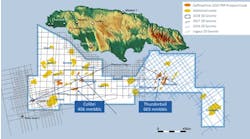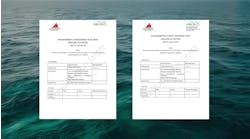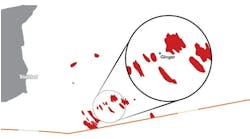Transportation, installation techniques evolving for heavier topside consignments
Capabilities increase to meet range of metocean conditions
Philippe Weber
Technip
My first job after graduation was with CFEM, a French company that specialized in offshore mobile drilling units, such as barges, semis, and jackups. In the early 1980s, the programs we used to evaluate vessel motions and calculate loads and fatigue were quite primitive compared with those we have today, so there was a greater degree of uncertainty and larger safety factors. The inclination tests we performed on those rigs were a vital check that the weight distribution and our basic calculations were as predicted.
When I joined Technip, one of our main objectives was to create platform technology that enabled installation without the need for a large crane vessel. We first developed the TPG 500 production jackup platform, with its buoyant hull, that could be wet-towed and installed by three tugs. This was a good option for the North Sea, where a large clearance is required below the deck to allow for the highest prevailing storm waves. This option was most economic with very large topside weights, where the cost of the buoyant hull and jacking systems could be offset by the savings in offshore hook-up and commissioning that a conventional multi-module offshore installation would entail.
But it was also clear that we needed a method of installing large conventional truss topside decks onto conventional piled steel jackets. We initially developed the floatover method for the Middle East region, where we could see a number of suitable projects coming up, but it was challenging at the start to convince oil companies to adopt this new method. Looking back, it seems strange, since floatover has now become the standard procedure for platform topside installations in the area.
The first breakthrough was the installation of a 2,500-metric ton (2,756-ton) topsides using the floatover method on EGPC’s Offshore Ethylene Platform in the Egyptian sector. This installation and the two that followed only used ballasting of the barge supporting the deck, to lower it onto the jacket support posts.
Lowering faster
This method was adequate where the sea conditions were calm, but in other areas of the world, in more open seas subject to swell conditions, that barge motions, especially heave, would be excessive. In these cases, the slow speed of ballasting, caused by the need to pump vast volumes of water, would result in an extended period to set the deck down and repeated impacts would cause damage to the topsides, jacket, and foundation piles.
A floatover of a large topside onto a floating semisubmersible hull.
A system to lower the topsides deck was required, and this is when the Unideck system was born.
The Unideck system uses hydraulic jacks to elevate the topside deck when it is on the barge, and then set it down onto the jacket within less than a minute. It was first tried on the Unideck jacks in 1995 to install Elf’s Cobo platform topside offshore Angola. This was one of the most challenging floatovers, since the long period swell in the Gulf of Guinea has a resonant effect on the barge transporting the topside, resulting in large heave motions even when the swell height is small.
Setting the deck down rapidly with the hydraulic jacks is the best way to install decks by floatover in this part of the world. I remember the relative motions between the topsides and jacket were quite high before mating, and with a 9,500-metric ton (10,472-ton) topside you are dealing with immense forces. The operation was a success and this was the first of many topside installations offshore West Africa, including Exxon’s East Area platform topsides at 18,000 metric tons (19,841 tons).
In the mid 2000s, we turned our floatover experience toward the mating of topsides onto floating structures with the Petrobras series of large semisubmersible platforms P52, P51, and P56. Here, the operation is complicated by the fact that, unlike a fixed jacket, the substructure is floating. Safely coupling two large floating bodies has its own set of challenges, even in sheltered waters. The hull freeboard – the distance from sea level to the top of the hull columns – is extremely low during these operations and has to be controlled very carefully by ballasting as the weight transfers from the barge to the hull.
Harsher environments
While the under-deck clearances of fixed platforms in the Middle East and offshore West Africa are low due to the mild environments, it was obvious that we could extend our accumulated experience to harsher environments where greater under-deck clearances are required. This involves elevating the topside at the construction yard and inserting a support structure, or jacket section, below it prior to load-out onto the transport barge.
This provides the topsides with the height required to mate it onto the jacket, but means it is transported at a high level, so the transport barge needs to have a broader beam to provide adequate stability. The jacket, in turn, must to be designed with a larger slot to allow the barge to enter the structure. At some point, as the topside and under-deck clearance becomes ever larger, a conventional steel jacket becomes too big to fabricate, rendering a gravity-based structure, either steel or concrete, the preferred substructure.
Over the years there has been a distinct trend towards larger topsides and more extreme environments, requiring higher deck installations. The forthcoming large gas developments offshore North West Australia are a good example of the need for large topside decks to treat the huge gas volumes, in a cyclonic area requiring a high under-deck clearance.
There is no doubt that we now have a better understanding of environmental conditions, and the programs we currently use to estimate vessel motions, calculate loads and fatigue are so sophisticated that it removes a lot of the uncertainty we had in the past. These state-of-the-art programs have been calibrated following extensive model testing programs and by using data from full scale installations.
Currently Technip is working on a project offshore North West Australia with a topside of around 35,000 metric tons (38,581 tons) and an under-deck clearance of some 26 m (85 ft). This project will take floatover installations in open seas to a new level, but it will not stop there.
During the development of Norway’s offshore sector using Condeep platforms, floatovers of almost 50,000 metric tons (55,115 tons) were performed in sheltered fjords. There could be floatovers at around this size onto semisubmersible hulls quite soon, and even possibly in open seas onto fixed platforms within the next 15 years if the barges keep getting larger or if a catamaran configuration is developed.
For progress to continue, however, it is absolutely vital that we attract young engineers into the oil and gas business over the next 10 years before the full effects of the “big shift change” are felt. In future, we will develop oil and gas in even more remote and harsher environments, such as the Arctic, and this will require our young engineers to confront a new set of issues.
Offshore Articles Archives
View Oil and Gas Articles on PennEnergy.com





